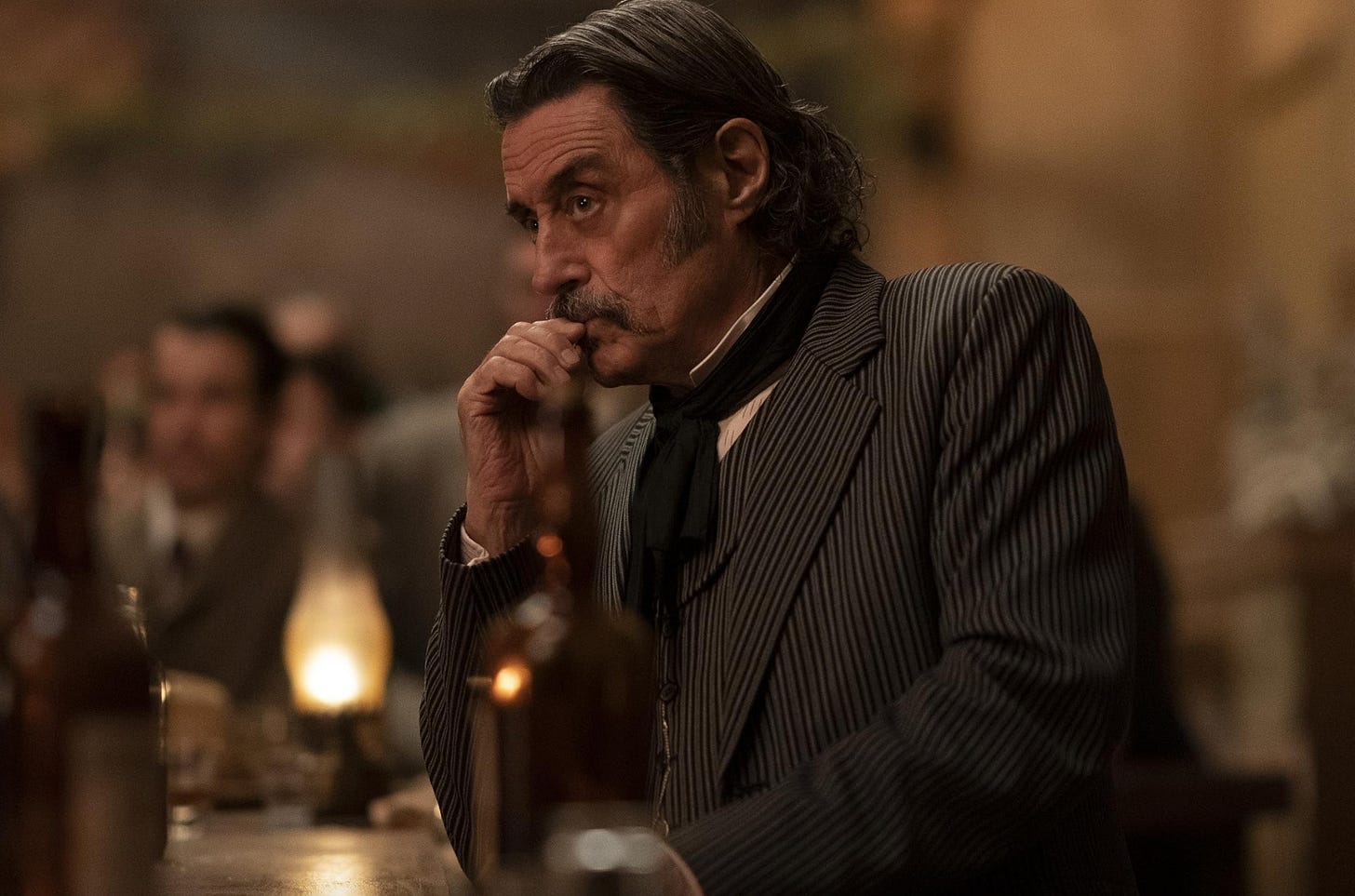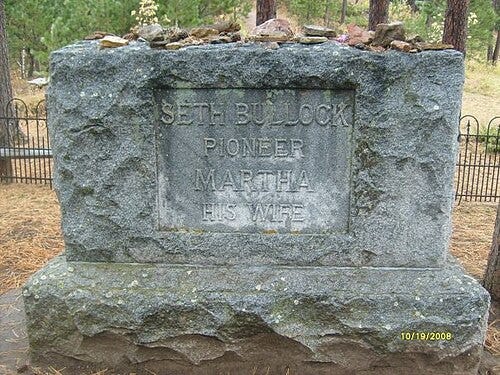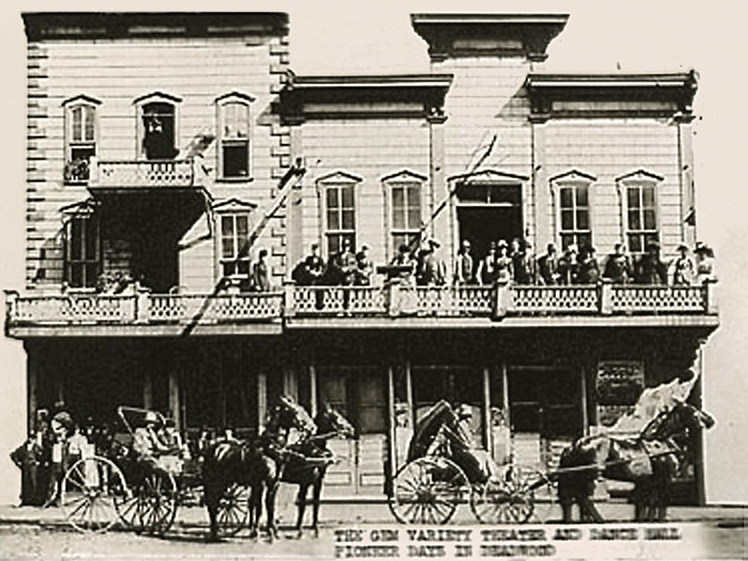The End of an Era: A Look at HBO's 2019 Film Deadwood
The 2019 HBO movie Deadwood picks up where the critically acclaimed series left off. Today, we compare several of the main characters to their real life counterparts. How accurate was Deadwood?
Background
Deadwood, directed by Daniel Minahan and written by David Milch, aired on HBO on May 31, 2019. It was the highly anticipated movie continuation of the popular television series, which ran from 2004 to 2006 on HBO.
The critically acclaimed series gained recognition for its rich storytelling, historical authenticity, and a cast of compelling characters, many of whom were based on real people. The show won eight Emmy Awards and one Golden Globe.
The movie reunited many of the original cast members, including Timothy Olyphant, Ian McShane, Molly Parker, Paula Malcomson, John Hawkes, and Gerald McRaney. It picks up where the TV series of the same name left off.
The television series “Deadwood” is set during the turbulent South Dakota gold rush of the 1870s. The show’s creator, David Milch, attempted to chronicle the town’s history, from its lawless mining camp origins to its transformation into a thriving community.
According to one review, the show strived to explore themes of power, morality, and survival in a harsh environment. The show blended both historical and fictional characters to create a compelling drama.
Though the series was universally praised by both fans and critics, it was cancelled after its third season, leaving many of the show’s storylines unresolved. At the end of season three, viewers were left with an unsatisfactory conclusion. George Hearst (Gerald McRaney), the villain of the drama, has gotten everything he wanted.
Film Overview
The movie begins in 1889 as South Dakota celebrates its statehood, which occurred just weeks after Custer’s massacre at the Little Bighorn. To the delight of fans everywhere, most of the cast is reunited for the continuing saga.
The basic plot of the movie was listed as: Saloon owner Al Swearengen and Marshal Seth Bullock clash with Senator George Hearst.
George Hearst, now a U.S. Senator and ruthless businessman, returns to purchase land from Charlie Utter (Dayton Callie). Hearst is a heavy investor in the installation of telephone lines across the prairie.
Utter’s land interferes with Hearst’s steady progress forward. Utter, unwilling to sell his land, consults with Marshall Seth Bullock (Timothy Olyphant). At about the same time, Hearst finds out he was deceived by saloon owner, Al Swearengen (Ian McShane).
Several years earlier, Hearst had arranged for the murder of a prostitute named Trixie who worked for Swearengen. To his shock and anger, Hearst finds Trixie still alive and slinging insults. Hearst agrees to spare Trixie if Swearengen will help him acquire Charlie Utter’s land.
Utter is then murdered. A man named Samuel Fields witnesses the murder but refuses to testify out of fear. He is placed in protective custody by Bullock.
From there, events spiral out of control, including several gunfights – it’s a western after all! Hearst is arrested for hiring hitmen to kill Utter. Eventually, after having a change of heart about his life and affections, Seth Bullock returns to his loving wife and family.
A happy ending for fans and the characters. But what, if any, part of the story is true?
Fact vs Fiction
So, did Deadwood exist? Absolutely! Deadwood’s history begins in the summer of 1874. General George Armstrong Custer led an expedition to the Black Hills area, searching for a suitable location to build a fort. Two prospectors who accompanied the trip discovered gold near the location of Custer, South Dakota.
This led to a massive gold rush and a make-shift tent city called Deadwood. By the end of 1876, Deadwood had more than 3,000 residents and nearly 200 businesses, including a substantial number of thriving saloons and brothels.
When creating the original series, David Milch used actual diaries and newspapers from residents of Deadwood during the 1870s. He wanted to create an authentic look and feel of the place within the show.
Were the Deadwood citizens based on real people? While many of the characters were based on real-life individuals, fictional characters were also introduced to enhance the storyline.
Seth Bullock (Timothy Olyphant) – the protagonist of the movie did exist. Bullock was born in Ontario, Canada, in 1847.
Along with his business partner, Sol Star, Bullock arrived in Deadwood in the summer of 1876. Seeing the potential of the town, the pair quickly opened a store at the corner of Main and Wall Street to peddle mining gear, tea, tobacco, and other goods to the residents.
A day after Bullock and Star opened their store, another real-life character, Wild Bill Hickock, would be gunned down in the Lewis and Mann Number 10 Saloon. While Bullock had no real interaction with Hickock or his murderer, his sense of decency wouldn’t let him ignore the rampant violence of the town.
By 1877, he’d become the acting sheriff of Deadwood. Known as a fair but just lawman, one who seldom carried a gun, Bullock had many run-ins with Al Swearengen over gambling and prostitution. He once drew a line down Main Street to illustrate which parts of the town were decent and which sections were controlled by Swearengen.
Unlike the movie, Bullock rarely had to resort to violence to get his way.
In his later years, Bullock became friends with President Teddy Roosevelt, who made him a US Marshal in 1905. He died of colon cancer on September 23, 1919, in Deadwood. He is buried in Mt. Moriah Cemetery near Wild Bill Hickock and Calamity Jane.
Al Swearengen (Ian McShane), the ill-tempered proprietor of the Gem Variety Theater, was an actual person. Ellis Alfred Swearengen and his twin brother, Lemuel, were born in 1845 in Oskaloosa, Iowa. Al left Iowa around 1870 to settle in Deadwood with his first wife, Nettie. By 1876, Nettie divorced him, accusing him of abuse. Swearengen was considered a violent, ruthless businessman, hated by many.
He opened the infamous Gem Variety Theater in 1877 as a dance hall, saloon, and more. Swearengen hired young women from the East, many of whom couldn’t speak English, to work as “dancers and singers” in his theater, and then forced them into prostitution. Plying their trade in curtained cubicles, they were beaten, humiliated, and dosed with laudanum. The real-life Swearengen was every bit as evil as his movie counterpart.
In 1879, the Gem Theater burned down, and Swearengen rebuilt it to its former glory. When it burned again in 1899, he chose not to rebuild and left Deadwood. Some reports say he died penniless. He was found dead in the middle of a Denver street on November 15, 1904, apparently of a massive head wound. His murder was never solved.
Charlie Utter (Dayton Callie), a friend of Wild Bill Hickok and Calamity Jane, led a life filled with adventure and excitement. A prospector, trapper, and translator for the Office of Indian Affairs, he eventually migrated to South Dakota, where he operated a shipping service between Deadwood and Cheyenne, Wyoming.
On the screen, Utter is shown as unshaven and scruffy. In real life, however, Utter fit the description of “dandy.” In a day when men rarely bathed, Utter took daily baths and spent an hour each morning in a barbershop having his long, blond hair washed, brushed, and groomed. Also, Utter was not murdered by hitmen hired by Hearst or anyone else.

Although his murder sparks the plotline in Deadwood, the Movie, Utter lived to a ripe old age. He migrated to Panama, where he became a druggist and opened several drug stores. Utter died in Panama on July 3, 1915, and is buried there.
The central antagonist of the film, business mogul and politician George Hearst, was also a real historical figure. Miner, investor, businessman, Senator, and owner of the San Francisco Examiner newspaper, he led an eventful and lucrative life. While some aspects of his time in Deadwood are slightly true-to-life, there is no evidence that he tried to murder anyone.
Hearst, a very controlling person in real life, described as a man of “ruthless integrity, a faithful friend, and without pretense or presumption of any kind,” was not the ruthless character portrayed by Gerald McRaney. Hearst never owned the Grand Central Hotel, as shown in the movie. However, he did build a new hotel at Homestake Mine in 1879.
George Hearst died on February 28, 1891, at the age of 70. His son, William Randolph Hearst, would eventually take over the Examiner and build the Hearst Publishing empire.
While other characters like Sol Star and Calamity Jane were also based on real individuals, some characters like Trixie and Joanie Stubbs were fictional and likely composites of different individuals.
Critical Reception
According to movie critic, Roger Ebert, “As much as fans have desperately wanted another season or movie before now, there’s something so perfect and beautiful about how this movie came out that almost makes one feel like it couldn’t have happened any other way.” (Ebert, 2019). Apparently, he wasn’t too concerned about historical accuracy.
Rotten Tomatoes gave Deadwood, The Movie a 98% rating. It was also nominated for many awards and won the Critics' Choice Award, a Western Heritage Award, and several others. Regardless of the liberties Milch might have taken with the script, fans were overwhelmingly delighted with the results.
Sources:
Deadwood: The Movie movie review (2019) | Roger Ebert. (2019, May 27). Roger Ebert. https://www.rogerebert.com/reviews/deadwood-the-movie-2019
HBO’s Deadwood – Fact & Fiction – Legends of America. (n.d.). https://www.legendsofamerica.com/we-deadwoodhbo/
Lane, T. (2020, May 20). Deadwood: Comparing the lead characters and their real world counterparts. WhatCulture.com. https://whatculture.com/tv/deadwood-comparing-the-lead-characters-and-their-real-world-counterparts
Matloob, H. (2024, November 22). DeADwOod: True stories of Wild West legends behind HBO’s gritty western series. Factual America Podcast. https://www.factualamerica.com/behind-the-screenplay/deadwood-the-real-wild-west-figures-who-inspired-the-series
Staff, H., & Staff, H. (2022, June 17). Who were the real men of Deadwood? HistoryNet. https://www.historynet.com/the-real-men-of-deadwood/















